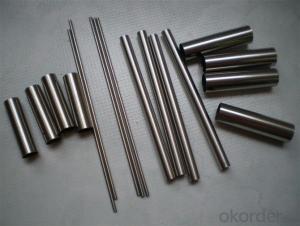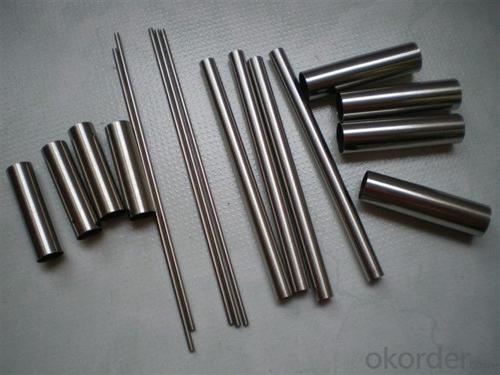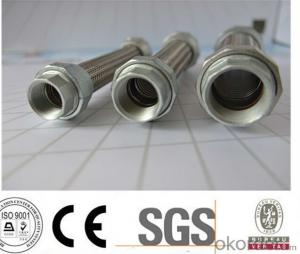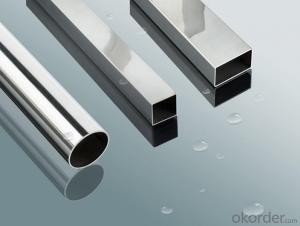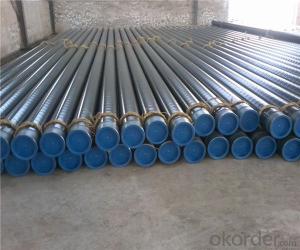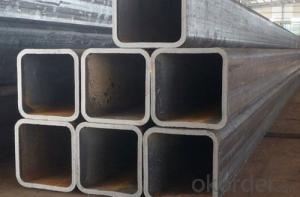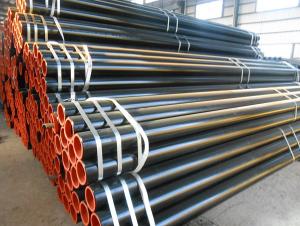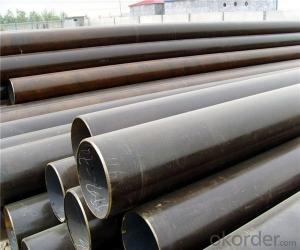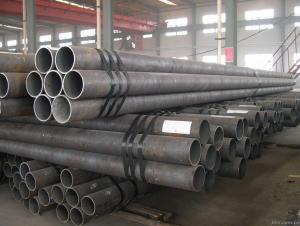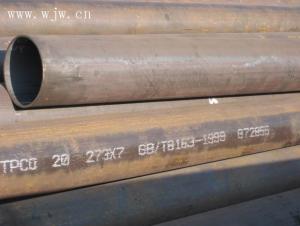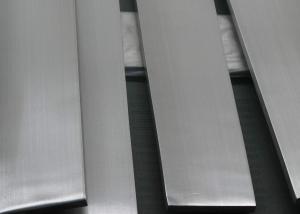Thick Wall Large Stock Fast Delivery Seamless Steel Pipe
- Loading Port:
- Shanghai
- Payment Terms:
- TT OR LC
- Min Order Qty:
- 1000 kg
- Supply Capability:
- 10000 kg/month
OKorder Service Pledge
OKorder Financial Service
You Might Also Like
applications of carbon steel pipe :
(1).Construction: Hall Structure, Sea Trestle, Airport Structure, Shipbuilding, Security Door
Frames, Garage Doors, Strengthening Liners of Steel Doors and Windows, Indoor Partition
Walls, Cable Bridge Structures and Expressway Safety Guards, Balustrade, Decorating,
Residential, Ornamental Pipes
(2).Automotive Parts: Motorcar Case, Car and Bus Manufacture, Vehicles
(3).Agriculture: Agricultural Equipment
(4).Industry:Machinery,Solar Stent, Offshore Oil Field, Mine Equipment, Electromechanical
Hardware, , heavy engineering, Mining and Resources, Process Engineering, Materials Handling, Mechanical Parts
(5).Traffic: Walking Rails, Roll-up Doors, Guardrail, Plaza Structure, Signage, Road Furniture,
Fencing
(6).Scaffolding Tube: Material Storage Racks, Pallets, Hydraulic Platforms, Trusses, Columns,
Purlins, Greenhouse Stands Towers
(7).Other: Sports Apparatus, Leisure Equipment, Furniture, School Furniture
ASTM A335 Seamless Alloy-Steel Pipe
Standard: BS 1139, BS 3059-2, JIS G3454-2007
Grade: 10#-45#, 15NiCuMoNb5, 10Cr9Mo1VNb
Detailed introduction to ASTM A335 seamless alloy steel pipe:
ASTM A335 seamless alloy steel pipe
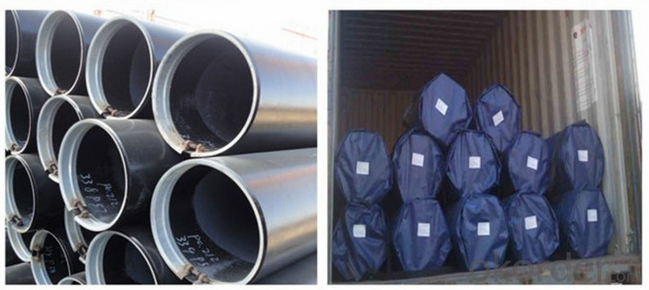
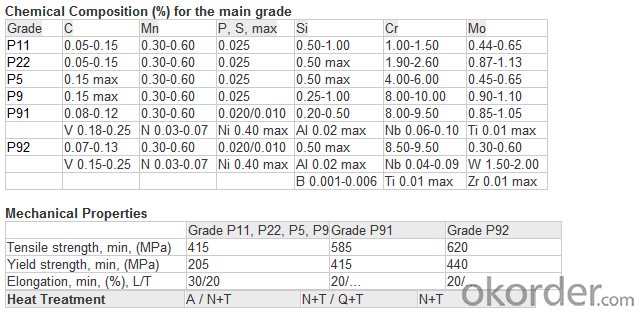
FAQ:
1) why you chose us ?
Professional Manufacturer and supplier of Steel pipe
More than 14 years’ professional producing experience
We can get the lowest ex-factory prices. The price are quite reasonable and it is lower than our commercial peers. also, we can guarantee the qualities of our products.
BV, ISO certificates and SGS test can be provided to assure the quality of our products.
2) Our minimum order quantity:
10 Metric Tons or one 20ft or 40ft Container.
3) How about the Delivery Time?
The steel pipe will be produced since we getting your deposit by T/T or Your original L/C. For normal size, some stocks in our factory now, we can supply once you need.
4)What kind of payment does your company support?
T/T, 100% L/C at sight, Cash, Western Union are all accepted.
5) Do you charge for the samples?
According to our company principle, we just charge for samples, you pay for the freight /courier charge.
6) Main market:
Mid East, South America, Africa, Southeast Asia, India etc
- Q: How do you test the quality of stainless steel pipes?
- There are several ways to test the quality of stainless steel pipes. One common method is visual inspection, where the pipes are examined for any surface defects, such as cracks, pits, or irregularities. Another method involves conducting non-destructive tests, such as ultrasonic or X-ray examinations, to detect any internal flaws or defects. Additionally, chemical analysis can be performed to verify the composition and grade of the stainless steel, ensuring it meets the required standards. Mechanical testing, such as tensile and hardness tests, can also be conducted to evaluate the strength and durability of the pipes. Overall, a combination of these testing methods is typically employed to ensure the quality of stainless steel pipes.
- Q: What is the difference between double wall and single wall stainless steel pipes?
- When comparing double wall and single wall stainless steel pipes, their construction and applications are the key distinguishing factors. Single wall stainless steel pipes are composed of a single layer of stainless steel. They find common use in various industrial settings, including plumbing, heating, ventilation, and air conditioning systems. These pipes are renowned for their durability, resistance to corrosion, and high tensile strength. They are suitable for transporting fluids and gases at moderate temperatures and pressures. On the contrary, double wall stainless steel pipes consist of an inner and outer layer of stainless steel, with insulation sandwiched in between. The insulation layer provides thermal insulation, preventing the transfer of heat and maintaining the desired temperature of the fluid or gas within the pipe. Double wall stainless steel pipes are typically employed in applications where temperature control is crucial, such as high-temperature industrial processes or the transportation of hot or cold fluids. Due to the presence of insulation, double wall stainless steel pipes exhibit superior energy efficiency compared to single wall pipes. They reduce heat loss or gain, thereby minimizing energy consumption and optimizing the efficiency of heating or cooling systems. Furthermore, the insulation layer also aids in reducing condensation, which can prevent damage to surrounding equipment or structures. In conclusion, the main distinction between double wall and single wall stainless steel pipes lies in the inclusion of an insulation layer in double wall pipes. This insulation layer grants them thermal insulation, making them ideal for applications that necessitate temperature control and energy efficiency. Conversely, single wall pipes are commonly utilized in various industrial settings where insulation or stringent temperature control is not required.
- Q: Can stainless steel pipes be used for construction purposes?
- Yes, stainless steel pipes can be used for construction purposes. Stainless steel is a highly durable and corrosion-resistant material, making it suitable for various construction applications. It is commonly used in structural applications such as building frameworks, handrails, and support structures. Stainless steel pipes are also utilized for plumbing systems, drainage systems, and HVAC (heating, ventilation, and air conditioning) systems. Additionally, stainless steel pipes are often preferred in construction projects where hygiene and cleanliness are essential, such as in hospitals, food processing plants, and laboratories. Overall, stainless steel pipes offer excellent strength, longevity, and resistance to rust and corrosion, making them a reliable choice for construction purposes.
- Q: What is the difference between 304H and 304 stainless steel pipes?
- The main difference between 304H and 304 stainless steel pipes is the carbon content. 304H contains a higher carbon content, which enhances its high-temperature strength and resistance to sensitization. This makes 304H suitable for high-temperature applications, such as in refineries and power plants, where it can withstand elevated temperatures without losing its mechanical properties. On the other hand, 304 stainless steel pipes have a lower carbon content, making them more suitable for general-purpose applications that do not require high-temperature resistance.
- Q: What are the different types of stainless steel pipe elbows?
- Stainless steel pipe elbows come in various types, each designed to meet specific applications and requirements. Here are some commonly used types: 1. The 90-degree elbow is the most popular choice for changing pipe direction by 90 degrees. It is available in different sizes and materials to cater to diverse needs. 2. If a sharper change in direction is required, the 45-degree elbow is used to alter the pipe direction at a smaller angle of 45 degrees. 3. The long radius elbow has a larger radius, ensuring a smoother flow of fluids. It is commonly used in critical applications like the oil and gas industry, where flow rate is crucial. 4. In tight spaces where a sharp change in direction is necessary, the short radius elbow with a smaller radius is often employed. 5. When a pipe size reduction is needed, the reducing elbow is used, resulting in a change in the pipe diameter. This type is commonly found in plumbing systems that require connecting different pipe sizes. 6. Welded elbows are created by welding two separate pipe sections, making them strong and durable. They are suitable for high-pressure applications. 7. Threaded elbows have female threads on both ends, allowing easy connection to other threaded pipes or fittings. They are commonly used in plumbing systems and can be disassembled easily if necessary. 8. Flanged elbows feature flanges on both ends, securely bolted together. They are frequently used in applications requiring frequent disassembly or when a high level of strength is needed. These examples represent just a fraction of the stainless steel pipe elbows available in the market. The choice of elbow depends on specific requirements such as pipe size, fluid flow rate, pressure, and temperature. Selecting the appropriate type of elbow is crucial for ensuring efficient and safe operation of the piping system.
- Q: Are stainless steel pipes suitable for cryogenic applications?
- Yes, stainless steel pipes are suitable for cryogenic applications. Stainless steel has excellent mechanical properties, including high strength and good corrosion resistance, which make it ideal for handling extremely low temperatures. Additionally, stainless steel has low thermal conductivity, which helps to minimize heat transfer and maintain the desired cryogenic temperatures.
- Q: Are stainless steel pipes suitable for sanitary applications?
- Yes, stainless steel pipes are highly suitable for sanitary applications. Stainless steel is known for its excellent corrosion resistance, durability, and hygienic properties, making it an ideal choice for environments that require cleanliness and sanitation, such as food processing plants, pharmaceutical facilities, and hospitals. Stainless steel pipes are non-porous, which means they do not absorb or retain bacteria, contaminants, or odors. They are also easy to clean and maintain, ensuring the highest level of hygiene. Additionally, stainless steel pipes can withstand high temperatures and pressures, making them suitable for a wide range of sanitary applications.
- Q: Can stainless steel pipes be used in the mining industry?
- Yes, stainless steel pipes can be used in the mining industry. Stainless steel is a highly durable and corrosion-resistant material that is well-suited for the harsh and demanding conditions often found in mining operations. The mining industry involves the extraction and processing of various minerals and ores, which often require the use of corrosive chemicals and high-pressure fluids. Stainless steel pipes are able to withstand these harsh conditions and provide reliable and long-lasting performance. One of the main advantages of stainless steel pipes in the mining industry is their resistance to corrosion. The mining environment often contains corrosive substances such as saltwater, acids, and various chemicals used in the extraction and processing of minerals. Stainless steel pipes are resistant to these corrosive elements, ensuring that they do not degrade or weaken over time. This makes them ideal for transporting fluids and gases in mining operations. In addition to their corrosion resistance, stainless steel pipes also offer excellent strength and durability. They can withstand high pressures and temperatures, making them suitable for handling the demanding conditions of the mining industry. Stainless steel pipes are also known for their low maintenance requirements, which is crucial in remote mining areas where accessibility and maintenance can be challenging. Furthermore, stainless steel pipes are versatile and can be used in various applications within the mining industry. They can be used for transporting water, slurry, and other fluids, as well as for ventilation systems, structural components, and even for lining mine shafts. Their versatility and durability make them a cost-effective choice for mining companies, as they can be used in a wide range of applications and have a long service life. Overall, stainless steel pipes are a reliable and durable choice for the mining industry. Their resistance to corrosion, high strength, and versatility make them well-suited for the challenging conditions found in mining operations. By using stainless steel pipes, mining companies can ensure the efficient and safe transportation of fluids and gases, contributing to the success and productivity of their operations.
- Q: What is the maximum diameter for a stainless steel pipe?
- The maximum diameter of a stainless steel pipe can differ based on different factors including the manufacturing process, grade of stainless steel, and intended use. Nevertheless, in general, stainless steel pipes can be produced in a diverse range of diameters to accommodate various industrial and commercial requirements. The maximum diameter can span from a few millimeters for precise, small pipes utilized in industries like medical and instrumentation, to several meters for extensive pipes used in applications like oil and gas pipelines or industrial infrastructure. It is advisable to seek guidance from a reliable manufacturer or supplier to ascertain the particular maximum diameter offered for the desired stainless steel pipe.
- Q: Can stainless steel pipes be used for power generation applications?
- Power generation applications often utilize stainless steel pipes for a variety of reasons. Firstly, the corrosion resistance of stainless steel makes it an ideal choice for withstanding the harsh conditions of power generation processes, including high temperatures and chemical exposure. This durability translates to reduced maintenance and replacement costs over time. Additionally, stainless steel pipes boast exceptional strength and can endure the extreme pressures and temperatures associated with power generation without any deformities or fractures. This reliability is crucial for ensuring the safety and efficiency of power generation systems. Furthermore, stainless steel pipes are highly resistant to scaling and fouling, which commonly occurs in power generation applications due to impurities in the water or steam. The smooth surface of stainless steel pipes minimizes the accumulation of deposits, facilitating efficient heat transfer and preventing any blockages or obstructions. Lastly, stainless steel pipes are compatible with a wide array of power generation fuels, ranging from coal and natural gas to oil and renewable energy sources. They withstand the corrosive effects of these fuels while maintaining their structural integrity. In conclusion, stainless steel pipes are an excellent choice for power generation applications due to their corrosion resistance, durability, strength, and compatibility with various fuels. They provide a reliable and long-lasting solution for the transportation of fluids and gases in power generation systems.
Send your message to us
Thick Wall Large Stock Fast Delivery Seamless Steel Pipe
- Loading Port:
- Shanghai
- Payment Terms:
- TT OR LC
- Min Order Qty:
- 1000 kg
- Supply Capability:
- 10000 kg/month
OKorder Service Pledge
OKorder Financial Service
Similar products
Hot products
Hot Searches
Related keywords
